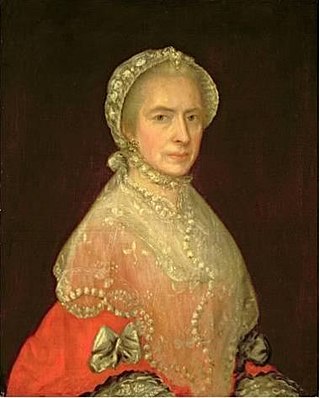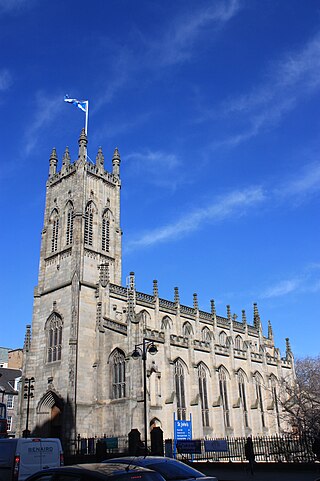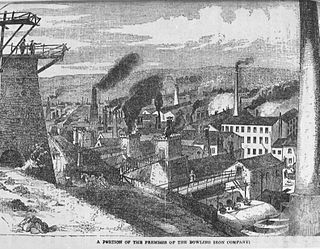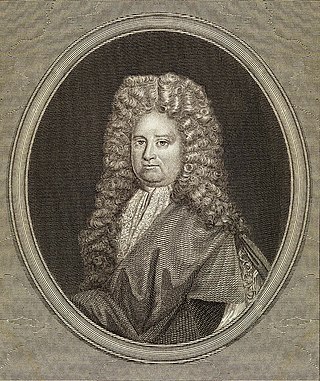
Thomas Secker was an Archbishop of Canterbury in the Church of England.

East Bowling is an area of Bradford, West Yorkshire, England located to the south of Bradford city centre. It forms the eastern half of the historic township and manor of Bowling. Bowling became a ward of the newly created Borough of Bradford in 1847. In 1882 the ward was split into the wards of East and West Bowling. In the north the boundary was along the Lancashire and Yorkshire Railway. To the south it was along Hall Lane and Bolling Hall Lane.

Willielma Campbell, Viscountess Glenorchy was a patroness of evangelical missionary work and founder of several chapels in Scotland, England and Wales.

The Church of St John the Evangelist is a Scottish Episcopal church in the centre of Edinburgh, Scotland. It is sited at the west end of Princes Street at its junction with Lothian Road, and is protected as a category A listed building.

Broomfields is a historic district on the south eastern edge of Bradford, West Yorkshire, England. In 1840 it was still a mainly rural area with a population of only a few hundred people. By 1880 it was one of the most densely populated districts of Bradford with 1,500 houses, a population of about 8,000 and many commercial premises. In 1932 a process of slum clearance and commercial regeneration was started. Today (2014) the district is almost wholly given over to commercial premises and once again has a resident population of only about two hundred people.

Ripley Ville or Ripleyville was an estate of model houses for the working classes in Broomfields in the West Bowling ward of the City of Bradford in West Yorkshire, England.

The Bowling Iron Works was an iron working complex established around 1780 in the district of East Bowling part of the township and manor of Bowling, now in the southeast of Bradford in Yorkshire, England. The operation included mining coal and iron ore, smelting, refining, casting and forging to create finished products.
The following is a timeline of the history of the city of Bradford, West Yorkshire, England.

Thomas Wills (1740–1802) was an English evangelical preacher, a priest of the Church of England who became a Dissenter.

Frances Mary Richardson Currer was a British heiress and book collector.

Bierley is an area in the Tong ward of the City of Bradford, West Yorkshire, England. Until 1974 it was in the West Riding of Yorkshire.

Bradford Dale, is a side valley of Airedale that feeds water from Bradford Beck across the City of Bradford into the River Aire at Shipley in West Yorkshire, England. Whilst it is in Yorkshire and a dale, it is not part of the Yorkshire Dales and has more in common with Lower Nidderdale and Lower Airedale for its industrialisation.

Egypt is a hamlet near Thornton, in the City of Bradford, West Yorkshire, England.
Ralph Cudworth was a scholar and conforming Anglican clergyman of puritan sympathy who is best known as the father of the philosopher Ralph Cudworth (1617–88), and the Plymouth Colony emigrant, soldier, and colonist, General James Cudworth (1612–82).
John Wood (1793–1871) was an English manufacturer in Bradford, a leading spinner of worsted. He is now remembered as a factory reformer associated with Richard Oastler, who campaigned for employment standards.

Richard Richardson (1663–1741) was an English physician, botanist and antiquarian. He became a Fellow of the Royal Society in 1712.
James Bardsley (1805–1886) was an English cleric of evangelical views.
George Stringer Bull (1799–1865) was an English missionary and cleric, a social and industrial reformer in the Bradford area.
James Stillingfleet (1741–1826) was an English evangelical cleric, vicar of Hotham in Yorkshire from 1771 until his death.

Sir Francis Lindley Wood, 2nd Baronet, was a Yorkshire landowner and political influencer of the nineteenth century. Born the son of a Royal Navy officer, Wood inherited his uncle's baronetcy in 1795. He owned several estates, living at points of his life at Bolling Hall, Hemsworth Hall, and Hickleton Hall. A Whig, Wood was a confidant of Lord Fitzwilliam and supported several Whig parliamentary candidacies, including those of Fitzwilliam's son Lord Milton and Walter Fawkes. An advocate for reform, Wood was a supporter of the abolition of slavery and of the Reform Act 1832. He served as High Sheriff of Yorkshire in 1814 and Vice-Lieutenant of the West Riding of Yorkshire in 1819.
This page is based on this
Wikipedia article Text is available under the
CC BY-SA 4.0 license; additional terms may apply.
Images, videos and audio are available under their respective licenses.














